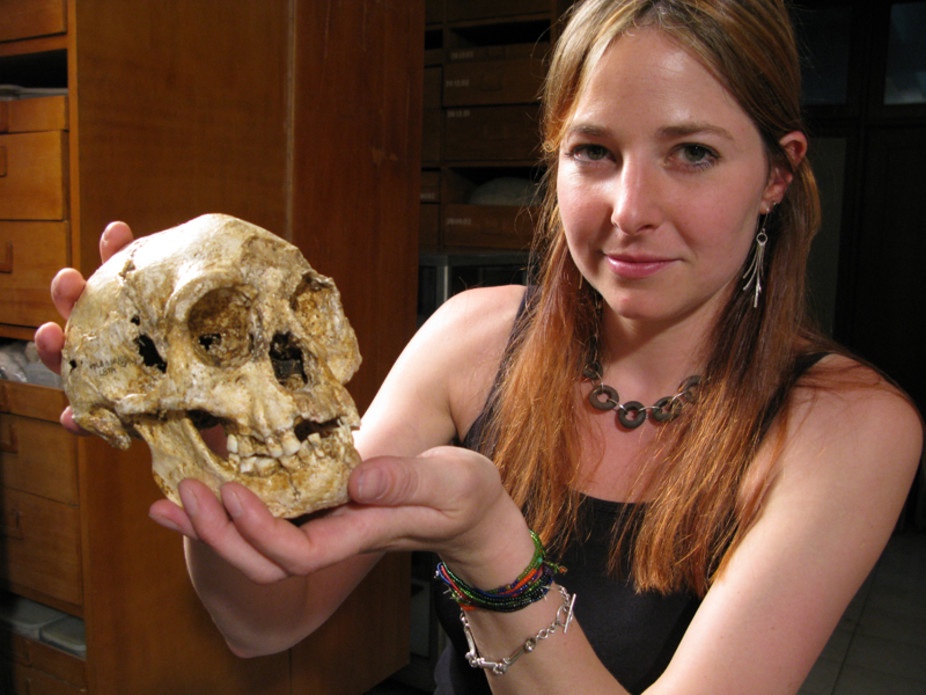
'Hobbits' May Have Led Early Humans Out of Africa

This article was originally published at The Conversation. The publication contributed the article to Live Science's Expert Voices: Op-Ed & Insights.
I was in Jakarta, Indonesia in 2008 and lucky enough to examine the bones of one of the most controversial hominin species that has ever been discovered. The skeletal remains belonged to an ancient people with tiny brains, and so short that they have been nicknamed "hobbits."
These important fossils, like so many others, were essentially found by mistake. In 1997, a team of Australian archaeologists, led by the late Mike Morwood, was on the prowl for evidence of the first modern humans to arrive on the continent. They had turned their attention to the chain of Indonesian islands that formed stepping stones from mainland South-East Asia to Australia itself.
Digging in a cave called Liang Bua on the island of Flores, they discovered something intriguing: extremely ancient stone tools. They were too old to have been made by our own species – Homo sapiens, or "modern humans".
In 2001, they found not just stones, but bones. The first to turn up was a strangely curved radius, a forearm bone. Four years later, the archaeologists unearthed what they initially thought were the skeletal remains of a child, including its skull. But the teeth in the skull weren’t milk teeth: they were well-worn, permanent teeth. The skeleton had clearly belonged to an extremely tiny adult, as Peter Brown, the first anthropologist to examine the bones, quickly recognised.
Brown measured the volume of the braincase by pouring mustard seeds into it. The skull was astonishingly small: around just 400 cubic centimetres. This was a good 200cc less than the cranial capacity of any fossils then included in our our genus, Homo. Just for comparison, your brain will measure somewhere between 1,000 and 2,000cc.
A new species
Some researchers went on to suggest that the Liang Bua hominins were simply modern humans, but exhibiting microcephaly, perhaps. But, right from the beginning, with a wide experience of examining both normal and pathological skeletons, Brown was convinced that the bones had not belonged to diseased individuals. As bones from more individuals turned up, all with the same characteristics, the chances of this being a one-off pathology became even more remote.
Sign up for the Live Science daily newsletter now
Get the world’s most fascinating discoveries delivered straight to your inbox.
Brown thought that the skeletons of the hominins were unusual enough to place them in a new genus. They seemed more similar to the ancient African australopithecines than to any member of the Homo genus. Brown suggested Sundanthropus tegakensis. But further discussions with colleagues led to the hominins being brought into the Homo fold. In 2004, the find was published in Nature: "a new small-bodied hominin" named Homo floresiensis.
Earlier Homo erectus specimens were known from east and South-East Asia. Perhaps, suggested some researchers, the Flores hominin was an offshoot of Homo erectus, and had undergone "island dwarfing". Other experts were not so sure; the anatomy of Homo floresiensis seemed too primitive.
When I examined the bones of LB1, the first Liang Bua hominin to be discovered, I started by carefully removing them from their tupperware boxes. I was quite taken aback. The bones were absolutely tiny. I systematically laid out the strange little skeleton: skull first, at one end of a long table, followed by fragments of vertebrae, and then arm bones, hands, pelvis, leg bones and feet, just as I would do with any archaeological skeleton in the bone lab.
None of the bones looked obviously pathological. And anyway, it would have been a bizarre disease to produce the mixture of traits I was seeing in LB1 – something that had pushed this body backwards through millions of years of evolution. The shape of the pelvis and the proportions of the limbs looked primitive – reminiscent of australopithecines, or the earliest of human species, Homo habilis, from around 2-3m years ago. But those hominins only ever lived in Africa … as far as we know.
A new breakthrough
But in mid-April, Debbie Argue and colleagues published a paper in the Journal of Human Evolution, returning to the knotty problem of the Flores hominin and its place in human evolution. They had amassed more data than ever before to compare Homo floresiensis with other species, and they’d used analyses to find the best fit for the fossils on the hominin family tree.
The Flores hominins were, more clearly than ever, rooted deep in that tree: they could not be descendants of Homo erectus. They came from something more primitive – a close cousin of Homo habilis. But what was an ancient-looking hominin like this doing in Indonesia?
In the most widely accepted model of human evolution today, the first emergence of hominins out of Africa involved Homo erectus, and happened some time after 2m years ago. But Homo floresiensis raises the tantalising possibility of an earlier expansion of hominins – who were probably not-quite-Homo – out of Africa.
We know, from reconstructions of ancient climate and geography that it certainly would have been possible for hominins to emerge from Africa as far back as 3m years ago. In fact, other large mammal species – including elephants – did just that .
But can we really infer such an early, out-of-Africa migration on the basis of a handful of bones from one site in Indonesia? For many palaeoanthropologists, that’s a step too far. But it’s hard to know how else you can explain the presence of something so ancient looking on Flores. Brown knew he was looking at something strange, something that would challenge our ideas about human evolution, as soon as he laid eyes on that first skull from Liang Bua Cave.
And he was right…
Alice Roberts, Professor of Public Engagement in Science, University of Birmingham
This article was originally published on The Conversation. Read the original article.









